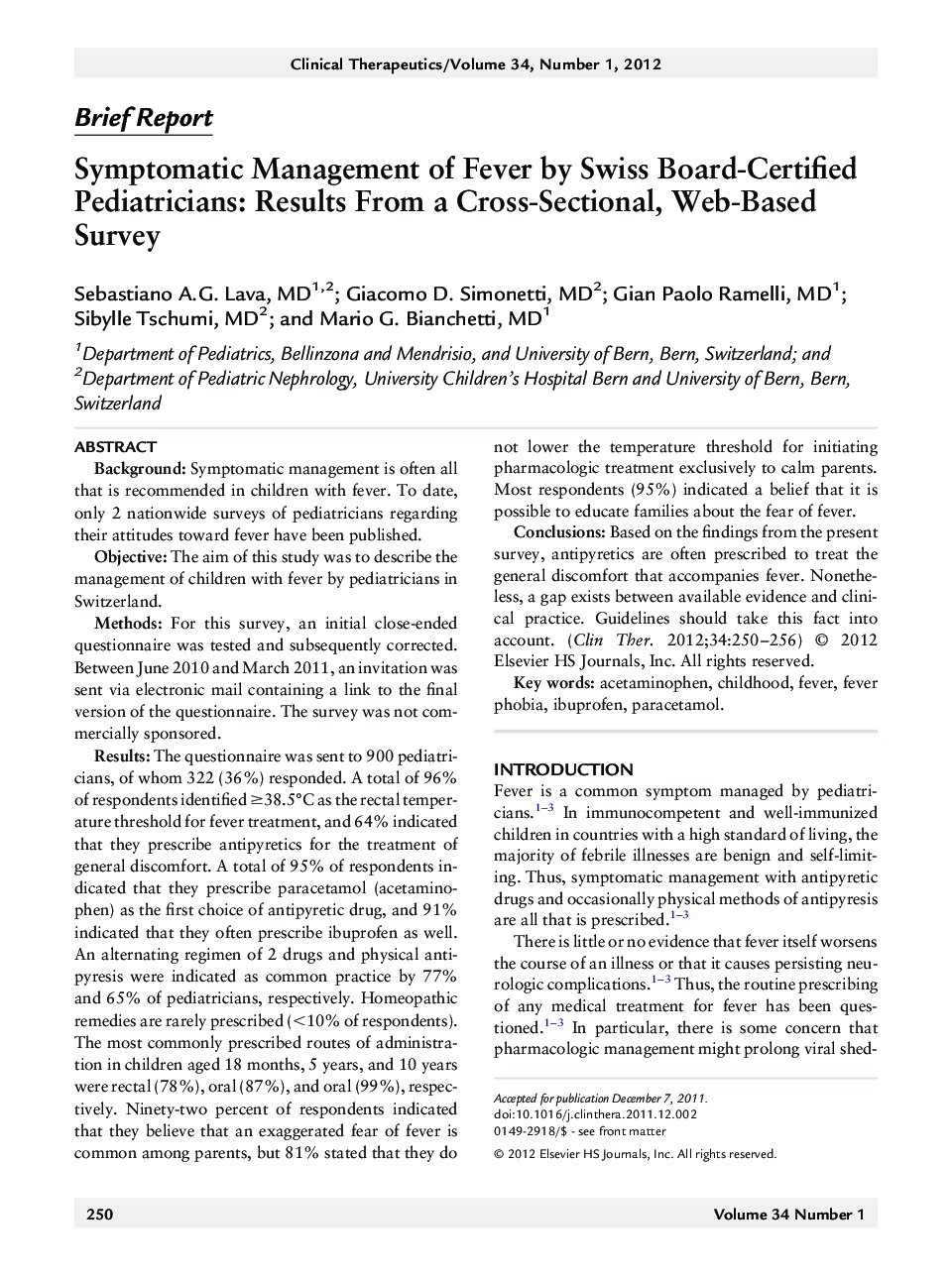| Article ID | Journal | Published Year | Pages | File Type |
|---|---|---|---|---|
| 2527386 | Clinical Therapeutics | 2012 | 7 Pages |
BackgroundSymptomatic management is often all that is recommended in children with fever. To date, only 2 nationwide surveys of pediatricians regarding their attitudes toward fever have been published.ObjectiveThe aim of this study was to describe the management of children with fever by pediatricians in Switzerland.MethodsFor this survey, an initial close-ended questionnaire was tested and subsequently corrected. Between June 2010 and March 2011, an invitation was sent via electronic mail containing a link to the final version of the questionnaire. The survey was not commercially sponsored.ResultsThe questionnaire was sent to 900 pediatricians, of whom 322 (36%) responded. A total of 96% of respondents identified ≥38.5°C as the rectal temperature threshold for fever treatment, and 64% indicated that they prescribe antipyretics for the treatment of general discomfort. A total of 95% of respondents indicated that they prescribe paracetamol (acetaminophen) as the first choice of antipyretic drug, and 91% indicated that they often prescribe ibuprofen as well. An alternating regimen of 2 drugs and physical antipyresis were indicated as common practice by 77% and 65% of pediatricians, respectively. Homeopathic remedies are rarely prescribed (<10% of respondents). The most commonly prescribed routes of administration in children aged 18 months, 5 years, and 10 years were rectal (78%), oral (87%), and oral (99%), respectively. Ninety-two percent of respondents indicated that they believe that an exaggerated fear of fever is common among parents, but 81% stated that they do not lower the temperature threshold for initiating pharmacologic treatment exclusively to calm parents. Most respondents (95%) indicated a belief that it is possible to educate families about the fear of fever.ConclusionsBased on the findings from the present survey, antipyretics are often prescribed to treat the general discomfort that accompanies fever. Nonetheless, a gap exists between available evidence and clinical practice. Guidelines should take this fact into account.
